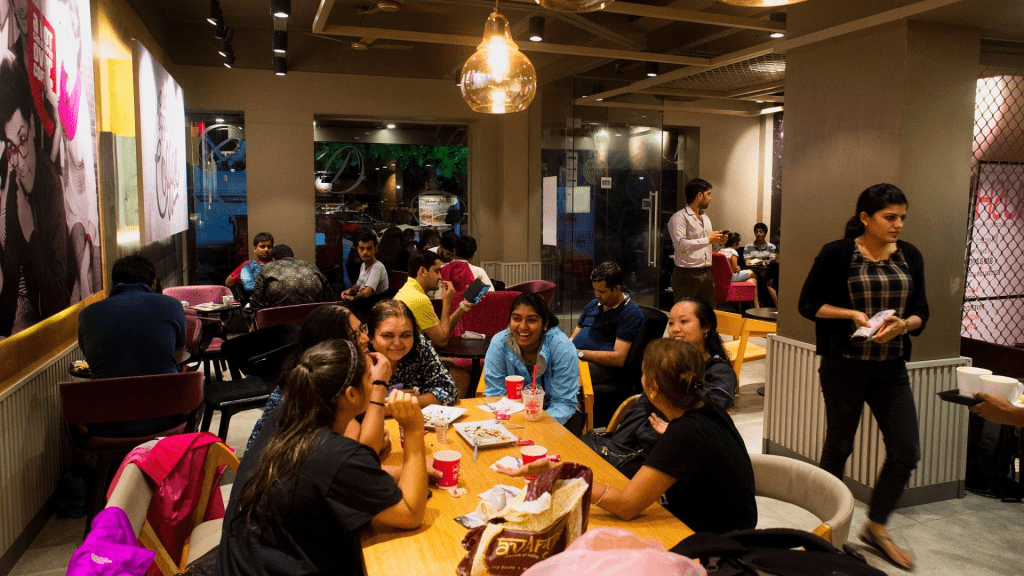Cafe chains in India are witnessing a notable surge in growth, outpacing quick service restaurants (QSR), as indicated by executives and analyst reports. This shift can be attributed to the changing preferences of younger, aspirational consumers who are increasingly opting to gather and spend time in cafes, despite the relatively higher prices on the menu.
Large chains such as Tata Starbucks, Costa Coffee, and Barista have recognized India as a top growth market, capitalizing on its flourishing coffee culture. With double-digit growth rates, these established players are thriving in the Indian market. Joining the wave of success are new global entrants like British chain Pret a Manger and Canadian chain Tim Hortons, eager to tap into the country’s coffee-loving population. Moreover, the emergence of new-age specialty coffee chains like Blue Tokai, Third Wave, and Slay further exemplifies the robust coffee culture that is fueling the industry’s growth in India.
“We have achieved sales and transaction numbers exceeding our expectations, indicating strong demand,” said Tarun Jain, chief executive of Tim Hortons, which is in its first year of India operations.
Tim Hortons has entered India in partnership with AG Cafe, a joint venture entity owned by fashion and retail conglomerate Apparel Group, and investment manager Gateway Partners. It expects to set up 120 stores by 2026.
Tata Starbucks, which crossed sales of INR 1,000 crore in 2022-23, identified India as among its core growth markets during a management commentary after its fourth quarter earnings. The joint venture between the Tata Group and Starbucks opened 71 new stores last fiscal, its fastest annual expansion, taking the overall store count to 333.
“Tata Starbucks is looking to rapidly expand its presence in the coming years; we are looking to enhance relevance for more segments of consumers,” said Sunil D’Souza, Managing Director of Tata Consumer Products.
Despite its higher pricing compared to competitors such as Cafe Coffee Day and Costa Coffee, the company is experiencing rapid growth.
According to industry executives, cafes that position themselves as social gathering spots or even alternative workspaces outside the home are successfully attracting younger audiences and contributing to the thriving cafe culture.
This trend is also benefiting packaged coffee players.
“New coffee shops are coming up, the cafe culture is evolving,” Philipp Navratil, Head of Nestle’s coffee strategic business unit, said in a recent interview. “India is now among the fastest-growing coffee markets for Nestle globally and offers a huge opportunity for penetration-led growth, both through in-home and out-of-home consumption.”
Cafe chains have also become appealing to investors.
In January, Blue Tokai Coffee Roasters secured $30 million in a funding round primarily led by A91 Partners, while Third Wave Coffee Roasters received a $20 million investment from WestBridge Capital last year. Additionally, global chains like Cinnabon and Carvel are actively expanding their presence through local partnerships.
Coffee Day Enterprises, the operator of the popular homegrown Cafe Coffee Day chain, experienced a significant 75% year-on-year increase in revenue in FY 23. However, the chain had to reduce its store count to 469 outlets during the year due to high debt and alleged mismanagement of funds.
Statista Research estimates that the coffee cafe franchise market in the country is valued at INR 5,000 crore, with a steady growth rate of 8-9% per year.
In contrast, the Quick Service Restaurant (QSR) industry, which has a significantly larger estimated market value of $16.72 billion, approximately INR 1.38 lakh crore, in 2023 according to market research firm Research and Markets, is experiencing a slowdown due to mounting growth pressures.
The majority of Quick Service Restaurant (QSR) chains in the country have witnessed either stagnant same-store sales growth or a decline of approximately 5-6% in the past two reported quarters.
